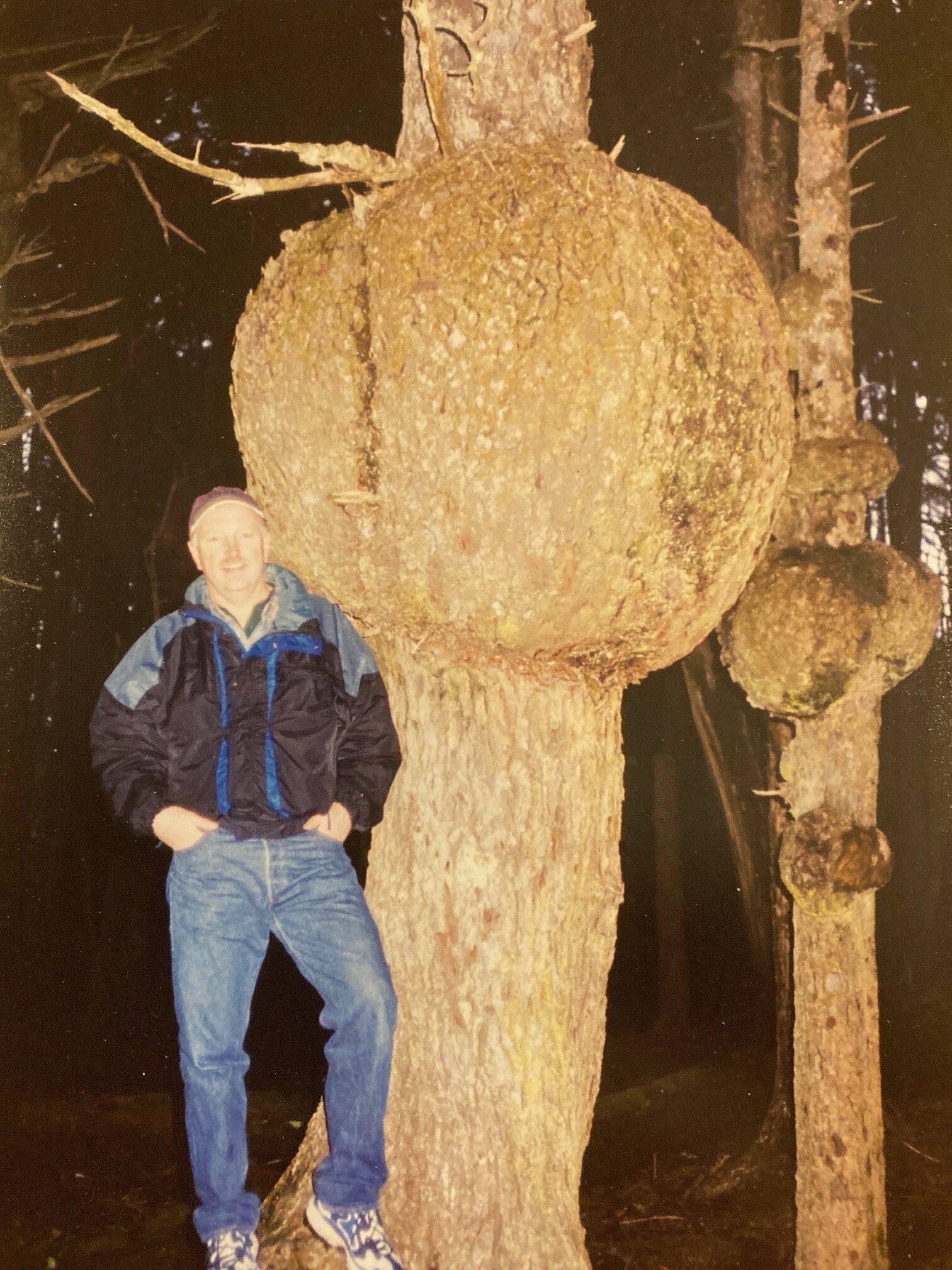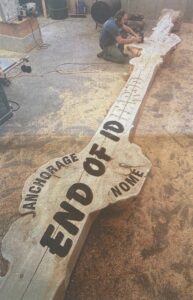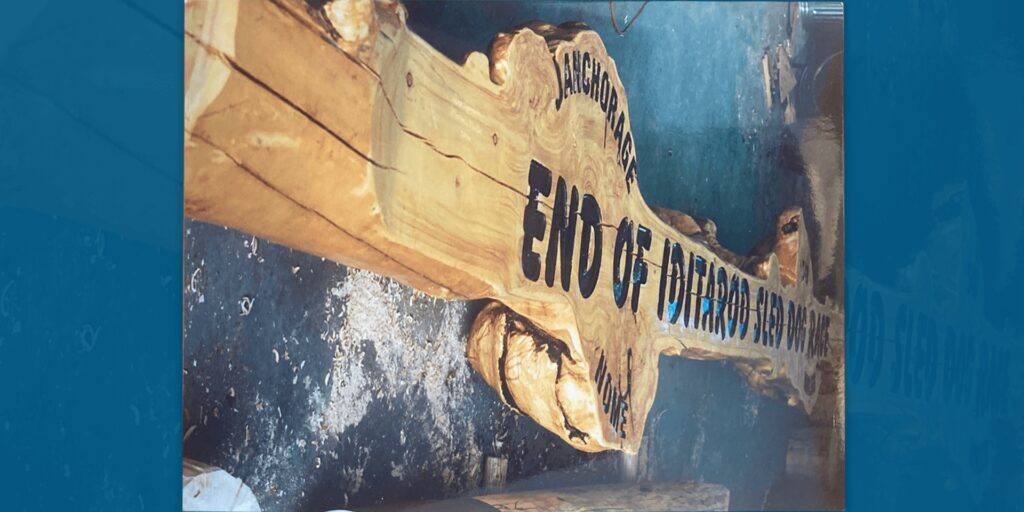Since its premiere in 1975 the Iditarod’s Burled Arch has become every musher’s goal as they envision the finish line of “The Last Great Race”. Located at the end of a snow-packed chute in Nome, the archway carved from Sitka spruce has become the pinnacle of dog mushing.
The original arch unexpectedly fell in 1999, leaving the Iditarod Trail Committee (ITC) in a rush to commission a new arch. A search for a craftsman who understood the complexities and nuances of working with the iconic burled spruce wood was underway. Trails pointed to longtime Iditarod fan and volunteer Bob Kuiper of Sterling.

“And I just happened to be somebody that knew something about burls,” Kuiper said.
A piece of wood with more than 50 burls was sourced from Hope, Alaska and trucked over to Kuiper’s workshop in June 1999.
“I was a little intimidated in the beginning to whether I could produce Alaska’s most famous sign,” Kuiper said.
Kuiper waited anxiously for seven months as the wood dried in his workshop. With Iditarod 2000 only three months away, a time crunch began to have the new sign completed by March.
After nearly 150 hours of labor, Kuiper inscribed the words “Iditarod Sled Dog Race” on the face of the arch, swapping around the words “dog” and “sled” on the name citing that it made more sense to him. According to Kuiper, no one seemed to mind his use of artistic license.
“I had a couple of nightmares where I had misspelled the word ‘Iditarod’,” Kuiper shared.
Once his work was complete, Kuiper signed his name on the underside of the arch to mark his place in winter sports history. Northern Air Cargo transported the arch to Nome and it was placed at the end of Front Street just in time for the 2000 Iditarod finish.
Kuiper fondly reminisced about his first time seeing the Iditarod in action at the start in 1974.

“Everything was Helter Skelter. Everybody who came there to watch had to help handle the dogs,” Kuiper said. “It was a wild scene. And I was hooked from that day on and followed everything I could about the Iditarod.”
Bob has recounted decades of photographs, printed articles and phone calls from friends and family over the years from sightings of his prized arch in print and on television. He is filled with immense pride knowing his creation has been seen far and wide. He shares a kindred reverence for the Arch as Iditarod mushers do with their visions of crossing the finish line after racing their dog teams across 1,049 miles of Alaska’s toughest terrain.
Kuiper was saddened to receive the news that his beloved arch had collapsed on April 28th.
“And when I heard that it came down, I was obviously very surprised,” Kuiper said. “It’s been real meaningful to me. So it really caught me off guard.”
After Kuiper received pictures of the felled arch, he concluded the collapse was due to wood rot from years of exposure to moisture.
The arch received a “face lift” of sorts in 2013. Over 30 hours of labor was dedicated to providing upkeep to maintaining the preservation of the piece. Kuiper suspects that over the years that sealed outer coating may have been added to the arch’s exterior, possibly keeping the wood moist and contributing to its demise.
His expertise with craftwork of large spruce trees suggests that the new arch would only need a breathable stain to ensure longevity. Kuiper proposes that possibly the addition of a structure like a gazebo or awning to cover the arch when not in use just could be the trick to keep it standing and ensure it stays safe and sturdy for years to come.
The Iditarod Trail Committee already had plans in the works to fabricate a new archway at the time the current one had collapsed. Upon hearing that the ITC offered the commission of the newest iteration of the iconic arch to Iditarod veteran Ramey Smyth, Kuiper says he is available to help any way he can. Before the announcement, he stated that he would be happy to do it all over again.
“I’m going to try to get a hold of him sooner or later, chat with him about it,” Kuiper offered.
The search is on for the right materials needed to construct the new arch. It is expected to debut in time for next year’s Iditarod race, coinciding with the 100th Anniversary of the original Serum Run that was the inspiration for the Iditarod Sled Dog Race.
Until then, Bob is enjoying his retirement with his wife at their cabin that he built. He is always proud to share how his work has been engraved in the history books of Alaskan winter sports.
“It’s real satisfying to know that I built that thing in my shop,” Kuiper said.







